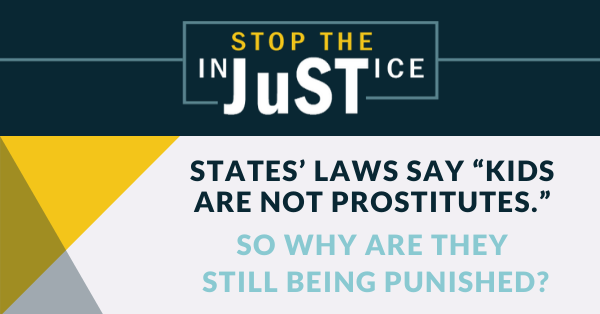
During the 2019 legislative session, nine states passed[1] critical legal reform measures to protect child sex trafficking victims from being prosecuted for prostitution, commonly referred to as “Safe Harbor” laws. However, as first pointed out in 2017, not all “Safe Harbor” laws actually insulate child sex trafficking victims from a punitive response for engaging in commercial sex. States, in an effort to carve out alternative processes for commercially sexually exploited minors, have developed a broad range of responses, ranging from the availability of an affirmative defense to full non-criminalization, with various other legal responses falling somewhere in between. Once again, lawmakers underlined the prevailing conflict between the anti-trafficking community and other stakeholders that regard some commercially sexually exploited minors as consensual actors, needing of reform and punishment.
South Dakota is one such state that complicated the “Safe Harbor” narrative and furthered the disparate legal processes designed to address child sex trafficking victims. Legislators this session passed House Bill 1063, which repealed the previous law that allowed 16 and 17 year old kids to be charged and prosecuted for prostitution. In demonstrating their support for the measure, several lawmakers emphasized the inherent injustice of prosecuting children for prostitution offenses, stating, “prostitute implies consent and that a minor chose,” “the key is getting them the help they need,” and “we need to get [the child victim] help, not treat them as a criminal.”[2]
So why are child victims in South Dakota, like many other states, still vulnerable to arrest and prosecution?
Undoubtedly, House Bill 1063 made an important legal and policy change; yet, in doing so, it amended the state’s Child in Need of Supervision (CHINS) process to include “a child who engages in prostitution by offering to engage in sexual activity for a fee or other compensation.”[3] The intent of the bill was to treat commercially sexually exploited minors as victims, not delinquents; however, as written, South Dakota’s new law will create very little practical change for child victims. Effectively, minors engaged in commercial sex will still be subject to an inherently adversarial process within the juvenile court system.
We strongly disagree. Unlike a protective response, deeming a minor survivor as a “child in need of supervision” denotes culpability and responsibility. Sending a youth survivor into the juvenile justice system, where the CHINS process is housed, commences a punitive process: a child is still taken into custody, charged with an offense, provided a sentence (albeit a “reformative” one), and placed on probation. Should the minor violate the terms of probation,[4] he or she is vulnerable to re-arrest and additional charges. No aspect of this process is trauma-informed or victim-centered.
Unfortunately, South Dakota is not the only state with such conflicted laws and practices. 11 other states have created alternative responses that fail to unequivocally identify and respond to all minors engaged in commercial sex as victims of sex trafficking. Oftentimes, these alternative responses are utilized as a means of ensuring that the child is separated from the exploiter and engaged in services. However, requiring youth survivors to participate in services or refrain from certain behaviors, as all diversion programs do, is a flawed response in the context of sex trafficking victimization. This design is not only incompatible with trauma, it is incompatible with justice.
First, placing requirements on exploited youth ignores the reality that survivors of sex trafficking commonly deny victimization and oftentimes must reach emotional, psychological, physiological, and spiritual stability before they can begin to safely and productively process and treat their exploitation. Secondly, mandatory participation in services fails to recognize that a key element of providing a protective response to survivors is refraining from repeating behaviors that mimic the behaviors of the exploiter, including conditioning protection on a survivor’s compliance with certain expectations or rules. Lastly, requiring satisfactory participation in services negates the integral role that flexibility plays in responding to trafficking victimization. Healing is not linear; it is imperative that service responses allow for setbacks and pauses in order to ensure emotional safety and sustainable recovery. In addition to clashing with a requisite trauma-informed approach, diversion programs designed for commercially sexually exploited minors send mixed messages that survivors are somehow accountable for their own trafficking victimization.
While we acknowledge the legislative intent to protect and serve child survivors, we know there is a better and more developmentally appropriate and victim-centered way. Alongside survivors and ally practitioners in the field, we have been developing and advancing laws and policies that are designed to truly serve and safeguard the child, addressing the many layers of trauma and harm suffered, and equipping the survivor with tools for self-empowerment and freedom from both victimization and juvenile or criminal records.
We urge South Dakota, as well as the remaining 19 states that have limited or no protections, to develop and pass legislation that provides an empathetic, JuST response to youth survivors of sex trafficking.
For more information on protective responses for youth survivors and your state’s efforts to develop non-punitive avenues to services and care, please review the recently updated Stop the InJuSTice 2019 Toolkit and the 2019 Protected Innocence Challenge State Report Cards.






